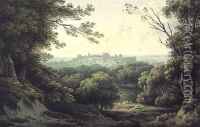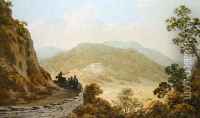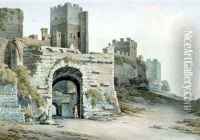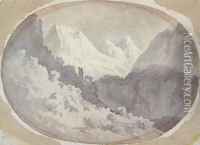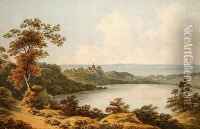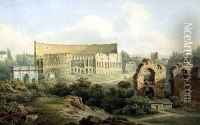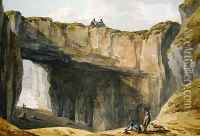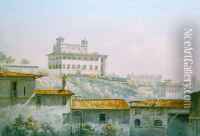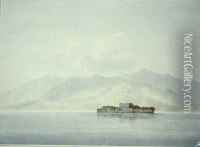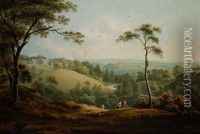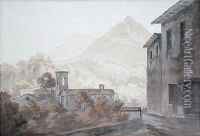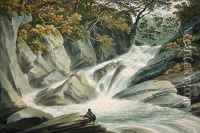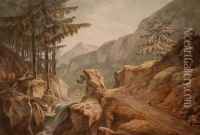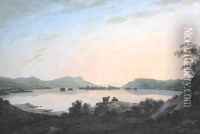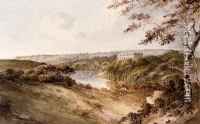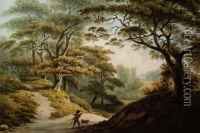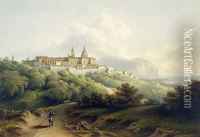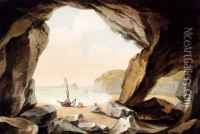John Warwick Smith Paintings
John Warwick Smith was a notable British watercolour landscape painter, born in 1749 in Irthington, near Carlisle, Cumberland. His artistic talents were recognized early on, and he was apprenticed to a topographical draughtsman in London. During his apprenticeship, Smith was influenced by the works of Paul Sandby, a pioneer of British watercolor painting.
Smith became a member of the Society of Artists in 1777 and began exhibiting his work. His paintings often depicted the picturesque landscapes of North Wales, where he traveled extensively. These travels were part of a broader trend during the period known as the 'Picturesque Movement', where artists sought to capture the beauty of natural landscapes.
In 1781, Smith embarked on a Grand Tour of Italy, which was a customary practice among artists and the nobility of the time. There, he honed his skills and absorbed the influence of the Italian light and landscape, which would be evident in his later works. After returning to England in 1784, he continued to exhibit his work at the Royal Academy and built a reputation as a skilled painter of the British and European landscapes.
Smith's work is characterized by its delicate touch and subtle use of color, which was innovative at the time and contributed to the development of watercolor as a respected medium in British art. He was a contemporary of artists such as J.M.W. Turner and Thomas Girtin, who were also instrumental in the rise of watercolor painting during the late 18th and early 19th centuries.
John Warwick Smith continued painting throughout his life, capturing the natural beauty of the English countryside as well as scenes from his travels. He passed away in 1831, having left behind a legacy as one of the prominent figures in the early history of British watercolor painting.
